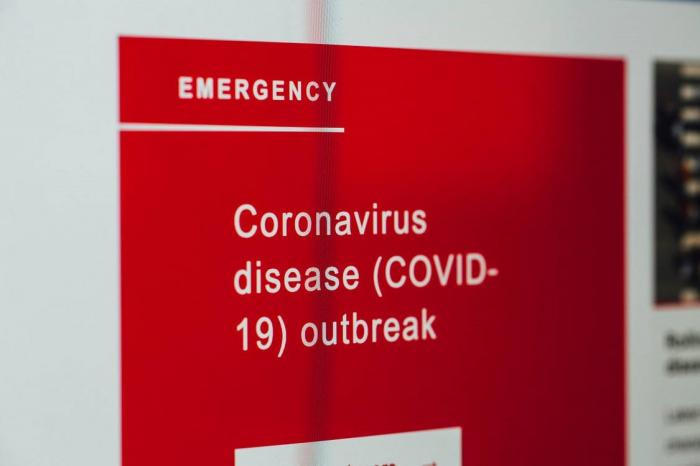Workers' Compensation and Civil Litigation Consultation & Defense












Covid-19 Resources: California
California
2020-06-22
How to Avoid a Potential Serious & Willful Claim During the COVID Pandemic

In the age of COVID-19: Employers should maintain a safe work environment to avoid a potential Serious and Willful claim under Labor Code Section 4553 and 4553.1
California Workers' Compensation is a no-fault system and an exclusive remedy. This means that injured workers cannot sue their employers for a workplace injury; they must rely on Workers' Compensation and employers pay for Workers' Compensation insurance. Workers' Compensation insurance is supposed to take care of injured workers. But what happens in situations where an employee claims the employer is at fault for a workplace injury? If the employer is found to have caused an employee's injury by its "serious and willful misconduct" under California Labor Code § 4553, it will be ordered to pay an amount equal to half the value of all benefits paid as a result of the injury. This includes all temporary and permanent disability and medical benefits.
Although the California Supreme Court has characterized awards for serious and willful misconduct as an additional "benefit," the statute provides that this liability, like criminal fines and Cal/OSHA penalties, is uninsurable. An S&W award must be paid from the employer's own funds. The employer cannot shift this liability to an insurance company or a third party. (See, Insurance Code Section 11661 which provides that an employer cannot purchase insurance to cover financial liability for a Labor Code Section 4553 increase in payment.)
What does all this mean for employers in the age of COVID-19?
California Labor Code Section 6400 requires every employer to furnish employment and a place of employment that is safe and healthful for the employees therein. Section 6401 requires every employer to do every other thing reasonably necessary to protect the life, safety, and health of employees. To that end Section 6401.7 requires every employer to establish, implement, and maintain an effective injury prevention program, including an “occupational health and safety training program designed to instruct employees in general safe and healthy work practices and to provide specific instruction with respect to hazards specific to each employee’s job assignment.”
With the (re)-opening of many businesses throughout the country, the Centers for Disease Control (CDC) issued guidelines to assist employers for preparing workplaces for COVID-19, and these guidelines have since been adopted by the US Department of Labor Occupational Safety and Health Administration (OSHA) as well as Cal/OSHA to reduce the impact of COVID-19 outbreak conditions on businesses, workers, customers, and the public. It is important for all employers to plan and implement safety protocols for COVID-19. However, these guidelines are not a standard or regulation, and they create no new legal obligations. The recommendations are advisory in nature, informational in content, and are intended to assist employers in providing a safe and healthful workplace. These guidelines include good hygiene and infection control practices:
- Promote healthy hygiene practices; such as hand washing and employees wearing a cloth face; covering, as feasible
- Encouraging workers to stay home if they are sick
- Intensify cleaning, disinfection, and ventilation
- Encourage social distancing; and enhance spacing between employees, including through physical barriers, changing layout of workspaces, encouraging telework, closing or limiting access to communal spaces, staggering shifts and breaks, and limiting large events, when and where feasible
- Consider modifying travel and commuting practices. Promote telework for employees who do not live in the local area, if feasible
- Train all employees on health and safety protocols
What happens if an employer does not follow these guidelines?
To recover under Labor Code Section 4553 the employee must demonstrate that the employer's conduct was "willful" -- that is, that the employer actually knew of the dangerous condition, yet deliberately failed to take corrective action. This requirement has been interpreted by the courts to mean conduct which is something more than even gross negligence. It has been said to be conduct of a quasi-criminal nature. (Johns-Manville Sales Corp v. Workers’ Comp. Appeals Bd. (Horenberger) (1979) 96 Cal. App. 3d 923, 158 Cal. Rptr. 463.) The court emphasized that negligence will not suffice to meet this standard, but must also include an “element of malice, recklessness, or indifference to human safety.” In fact, the conduct must qualify as “quasi-criminal” in order to justify an award increase in compensation per Labor Code Section 4553.
- All Cal/OSHA violations (whether or not Cal/OSHA has issued a citation) can lead to a Serious & Willful claim if the employee can prove per Labor Code Section 4553.1 the following:
- the "specific manner" in which a safety order was violated,
- the violation caused the employee's injury, and
- both the safety order and the conditions making the safety order applicable to the work were known to the employer.
Do the CDC guidelines adopted by Cal/OSHA constitute a “safety order” such that an alleged violation will give rise to a claim under Section 4553 or 4553.1? In other words, can an employee bring an S&W claim for the employer disregarding guidelines for promoting hygiene and social distancing in the workplace?
Arguably, an employee who contracts COVID-19 may not only allege a workers compensation injury but also allege an uninsurable S&W violation if the employee can show the employer willfully disregarded the guidelines thereby causing the injury.
It is therefore recommended when investigating a COVID-19 claim to:
- ask the employee how he/she believes he/she contracted the COVID-19 illness;
- while respecting employee privacy, discuss with the employee his/her work and out-of-work activities that may have led to the COVID-19 illness; and
- review the employee's work environment for potential SARS-CoV-2 exposure. The review should be informed by any other instances of workers in that environment contracting COVID-19 illness.
- COVID-19 illnesses are likely work-related when several cases develop among workers who work closely together and there is no alternative explanation.
- An employee's COVID-19 illness is likely work-related if it is contracted shortly after lengthy, close exposure to a particular customer or coworker who has a confirmed case of COVID-19 and there is no alternative explanation.
- An employee's COVID-19 illness is likely work-related if his job duties include having frequent, close exposure to the general public in a locality with ongoing community transmission and there is no alternative explanation.
- An employee's COVID-19 illness is likely not work-related if she is the only worker to contract COVID-19 in her vicinity and her job duties do not include having frequent contact with the general public, regardless of the rate of community spread.
- An employee's COVID-19 illness is likely not work-related if he, outside the workplace, closely and frequently associates with someone (e.g., a family member, significant other, or close friend) who (1) has COVID-19; (2) is not a coworker, and (3) exposes the employee during the period in which the individual is likely infectious.
- Employers should contact their workers compensation broker, insurance carrier or a consultant to ascertain what actions they can take to insulate themselves.
Testan Law stands ready to assist you with any questions.
|
Debra S. Tobias
Oxnard (Westlake Village) |
